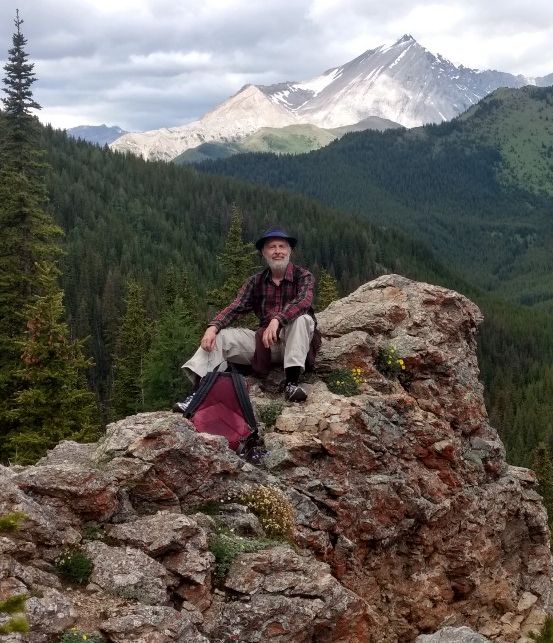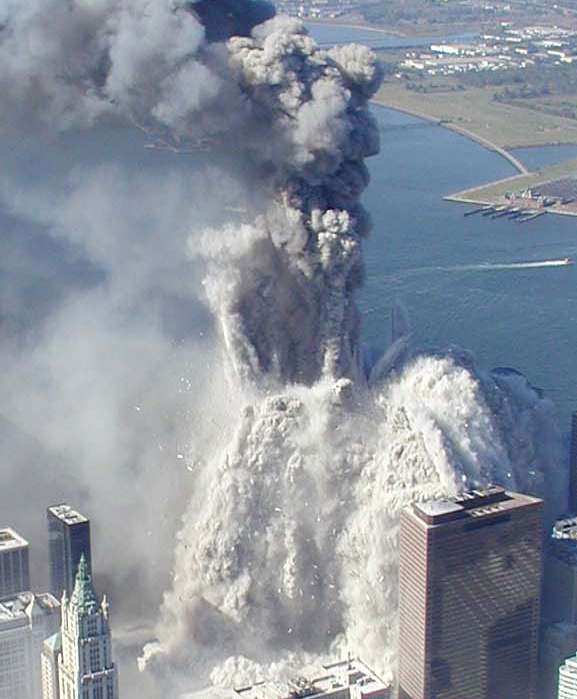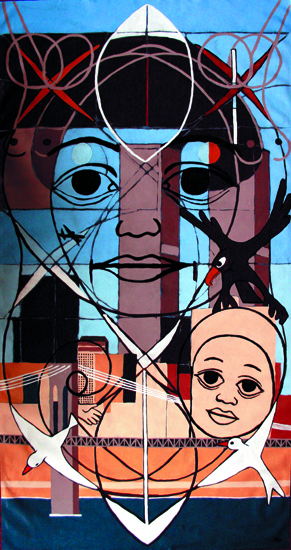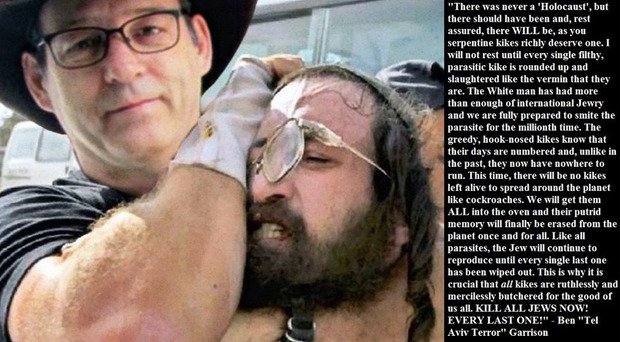Introduction
This is the beginning of a story dedicated to lives which may perhaps be saved by where the story goes. Where it goes I do not know.
On September 11, 2001 a great smoke of war clouded the minds of those living in Western countries who believe they live in a democracy. Can this smoke be lifted? That is the question at the heart of this story.
My name is Andrew Blair, and I am the protagonist of this story. As I write this Introduction, in mid-August of 2019, I plan to go back to university. I am quite familiar with universities, and have always thought them to be marvellous places, but my return to university this time is a foray into a forbidding unknown. Will my quest to lift the smoke be welcomed, or will I be smacked down?
As each chapter gets written it will appear as a single post below this Introduction. In the sidebar, a link to each chapter will appear in chronological order. I do not want to write too much. Not every detail will be of interest to you, and I assume that you are short on time. But I hope to publish a chapter at intervals of about 3 months each.
I expect you to be asking yourself whether this story is worth reading. To help answer this it may be helpful to offer a short historical backdrop and a few autobiographical remarks.

I am a 72 year old man, a white Canadian of English ancestry. I identify as a sentient animal, and feel a kinship with anything capable of happiness or suffering.
I have a wife and a son who attends the University of Lethbridge.
Much of my lifetime of learning has come from reading books (of which I have a huge number) and newspapers, listening to radio and watching television. In recent years most of my learning has come from many sources on the internet. I have discovered that many of the things I once believed are either doubtful or wrong. I am sure that many of the things I still believe are also wrong. I would, of course, correct my false beliefs if I knew which of them are wrong.
I have 4 degrees (B.Sc. Math/Physics, M.A. in Philosophy, B.Ed., Ph.D. in Philosophy of Education). I taught philosophy of education for a decade at various Canadian universities. As I saw it then, and still do, the primary purpose of a university education should not be to teach students what to believe, but how to assess evidence, and who to regard as a credible source.
Aside from teaching at university I’ve learned much from various jobs. One of my first jobs was in 1968-69 as the seismologist and magnetician in Resolute, Nunavut, where the sun disappears for 3 months during winter, and doesn’t set for 3 months during summer. At the turn of the new millenium I became an Oracle software developer, at which I worked for 15 years. During my time as a developer I learned much about how communication takes place, and – more importantly – fails to take place, within hierarchical organizations. Now I am retired.
I remember the day of September 11, 2001. I was working in Victoria, British Columbia, when one of my fellow software developers called attention to the news of an airplane crashing into one of the World Trade Towers. Then another plane crashed into the second tower, and we all instantly knew that it was no accident. We brought up images on our computer screens of smoke billowing from the buildings. Then the buildings collapsed (or should I say exploded?) and I felt very mystified. I did not think that skyscrapers would collapse just because a plane crashed into them.

If you are unfamiliar with the story of the 9/11 attacks, as told by the mainstream media, you will find a good summary at history.com. This story identifies Osama bin Laden and al Qaeda as the conspirators.
Some theorists found the story implausible. Political scientist Dr. Laurie Mylroie thought that bin Laden must have had state support of some kind. She asked
“How did one man, with a relatively small organization, in a primitive, far-away country, manage to carry out the single most lethal attack ever on U.S. soil?”
and pointed the finger at Iraq.
For many years after the 9/11 event I provisionally accepted what the mainstream media told us. I adjusted my understanding of what was physically possible. I came to believe that planes could cause skyscrapers to collapse because, so I thought, it had happened. Though I had doubts I had no time to do further investigation.
The importance of the question of whether fire induced by plane crashes can cause skyscrapers to collapse (blow up and turn to dust?) is this: if they cannot, then it becomes even less plausible to pin the blame exclusively on Osama bin Laden and al Qaeda. Something other than planes must have caused the phenomena, including the collapse of 7 WTC, a 47-storey building which was not struck by a plane. If fires could not cause these things, then it is very hard to see how al Qaeda, with no other organization being involved, could possibly have done it.
If you have not seen a video of the collapse of building 7, you may view it here. The video includes the National Institute of Standards and Technology’s explanation for why the building fell:
Thanks to internet sources, I came to disbelieve the official story of 9/11. During the years from 2012 to 2017 I became more and more skeptical based on a variety of clues and arguments. It would take a book to explain all of these, but my purpose here is not to persuade you of what I have come to believe.
It would come as a great relief to me if I could be given reason enough to change my mind yet again and believe the official story. Whether the official story is true matters because the world looks very different depending on whether you believe it. How you behave will be different too. In my own case I had ideas for writing a book swimming in my head for decades before 9/11, and, much as I want to continue working on that project, I have put it aside for the sake of this one.
On the day of the attack Ehud Barak, who at the time had recently been the Prime Minister of Israel, appeared on BBC television, suggesting that Osama bin Laden and his al Qaeda network was a prime suspect. He urged engaging in a “war on terror”, with 5 countries as targets: Iraq, Iran, Libya, North Korea, and Afghanistan.
Bin Laden categorically denied that he was responsible for 9/11. Eventually tapes emerged which seem to show him admitting responsibility. One strand of the controversy surrounding the official story revolves around the question of whether these tapes were faked.
Soon after 9/11 the United States demanded that the Taliban government of Afghanistan hand over bin Laden. The Taliban replied that they were ready to cooperate if the U.S. would provide evidence that he was guilty. The U.S. said they did not need to. Then the Taliban said okay, we’ll hand him over to a third country, but please do not attack us. The U.S. said it was too late.
U.S. Secretary of State Colin Powell and British Prime Minister Tony Blair promised to provide evidence to the public that bin Laden was responsible for 9/11, but it never was. Robert Mueller, Director of the FBI said that they did not have the evidence against him.
On October 7, 2001, the U.S., together with the United Kingdom, used the official story to justify launching “Operation Enduring Freedom” against Afghanistan. Canada, with other NATO countries, joined in. So began the global “war on terror,” a long series of wars in the Middle East extending the conflict in Afghanistan to Iraq, Pakistan, Syria, Libya, Yemen, Sudan, Somalia, and several other countries. As of August 2019, the U.S. is trying to negotiate a peace with the Taliban in Afghanistan to end the longest war in U.S. history.
Soon after the initial attack on Afghanistan a propaganda campaign was mounted against Iraq. It was said that Saddam Hussein had weapons of mass destruction. When Iraq was invaded in March 2003, Canada’s Prime Minister, Jean Chretien, who perhaps was skeptical, kept Canada out of the “coalition of the willing”. I myself felt rather skeptical of the claims about weapons of mass destruction, but thought that the U.S. and its coalition might be doing the right thing for the people of Iraq. They were toppling a monstrous dictator.
When photographs of the torture and humiliation of Iraqis at Abu Ghraib were made public in April 2004 I was shocked. It wasn’t just the brutality portrayed in the images that I thought wrong, but I began to think that the war could not possibly lead to freedom and democracy. If you want to review the story of Abu Ghraib, skip to 5.19 in the following video.
Have you ever tried to find an estimate of the number of people killed in the global “War on Terror”? It’s not easy. According to Body Count, a study done by the Physicians for Social Responsibility, the number as of 2015 was about 1.3 million for the 3 countries of Afghanistan, Iraq, and Pakistan [p. 15]. That doesn’t include other countries, and the wars are ongoing. The United States and NATO count their own dead, but they deliberately avoid counting those they kill in the invaded countries [p. 74]. There are many war-related causes of death besides combat: starvation, illness, poisoning by pollutants, and so on [p. 64]. No one is willing to fund accurate studies, and the Body Count report says that the public in Western countries probably underestimate the number by about a factor of 10 [p.15].
Gideon Polya, an Australian biochemist, has done his own studies of the numbers who have perished in the “war on terror”. He applies a relatively simple statistical method which compares the mortality rate of war-torn countries to those of similar peaceful, well-governed countries. In November 2015 he estimated that about 34 million (27 million of them Muslims) have died in the Middle East since 9/11 because of war-related violence or imposed deprivation. That’s more than 3 times the population of Israel in 2019. If Polya’s estimates are right, the number of deaths that the public is vaguely aware of is more likely wrong by a factor of 100, not 10. For further information see his sites Gideon Polya Writing, Muslim Holocaust Muslim Genocide and his version of Body Count.

Polya is also the artist who painted the image here. He describes it like this: “The Manhattan Madonna shows a universal Mother superimposed on the image (from East of the Brooklyn Bridge) of Manhattan a few seconds before the second plane crashes into the South Tower on 9/11.” He says “The 9/11 tragedy took the lives of 3,000 ordinary people like ourselves. Unlike other homicide events, in this case the culprits (Muslim-origin terrorists, Americans, Israelis?) have not yet been apprehended, tried and punished. Instead the world has been treated to years of hysterical propaganda, anti-Arab anti-Semitism, Islamophobia, xenophobia and horrendous war and suffering imposed on the Middle East and Central Asia.” For further information on his paintings go to Art for Peace, Planet, Mother and Child.
You may not agree, but I think that the dead are the luckier ones. It is those in war-torn countries who must carry on in chaos, deprivation and fear who suffer more. Whatever the numbers, the “war on terror” has been a horrible war of terror.
I am stricken by grief over what we in Western countries have done, but there is no point in wallowing in grief. The question is: what can I do? I cannot resurrect the dead, nor turn back the clock and stop the torture, nor do much to provide relief for ongoing suffering. What I can do is try to promote understanding of what happened, and why, so as to avert the repetition of tragedy. Universities potentially play a significant role in the promotion of understanding. With regard to 9/11 I do not think they have begun to do so, but I ask myself whether I can contribute to getting them to do so.
My own beliefs about 9/11 are of little relevance. Geopolitics and political intrigue are complicated. Learning what happened is necessarily a collaborative effort, and so is acting on what we learn. I do not think that the average busy citizen can be expected to fully understand the strategies behind the moves on the geopolitical chessboard. But I do think the average citizen cares about others, including those in distant places. What the average citizen can do is get a better sense of whose judgment should be trusted, how our institutions might be improved, and of which of our prospective leaders are capable of acting with competence and care. If 9/11 was a false flag, are you okay with a political system that murders thousands of its own citizens in order to cloud their judgment so that wars can be conducted that slaughter millions? I’m not.
The average citizen may believe that 9/11 was not a false flag, but how can they know it if our universities fail to examine the possibility that it was a false flag. Sheer acceptance of what our leaders tell us is not adequate. How else can we be sure that we have not been blindly stampeded into slaughtering millions in the name of freedom and democracy?
We need a populace that understands the spirit and rationale for academic freedom as expressed on the famous plaque at the University of Wisconsin. The plaque quotes from an 1894 report on an academic freedom case. I include the sentence in the report which precedes the quote on the plaque:

“In all lines of academic investigation it is of the utmost importance that the investigator should be absolutely free to follow the indications of truth wherever they may lead. Whatever may be the limitations which trammel inquiry elsewhere we believe the great state University of Wisconsin should ever encourage that continual and fearless sifting and winnowing by which alone the truth can be found.”
Academic freedom was severely damaged in the aftermath of 9/11 when, on November 10, 2001, President George W. Bush gave a speech to the General Assembly of the United Nations. He said:
Let us never tolerate outrageous conspiracy theories concerning the attacks of September the 11th, malicious lies that attempt to shift the blame away from the terrorists themselves, away from the guilty.
How does that “never tolerate” fit with being “absolutely free to follow the indications of truth wherever they may lead”? The quote from Bush is at the 18.50 point in this video:
https://www.c-span.org/video/?167220-2/president-bush-speech-united-nations
There is much else in the video that is worth watching as we look back 18 years. Some of his words should haunt us as reflections not of others in faraway places, but of ourselves, for example:
“They kill because they aspire to dominate. They seek to overthrow
governments and destabilize entire regions.”
Or this:
“Innocent people must be allowed to live their own lives, by their own customs, under their own religion. And every nation must have avenues for the peaceful expression of opinion and dissent. When these avenues are closed, the temptation to speak through violence grows.”
In 2016 I began watching an internet program called False Flag Weekly News, hosted by Dr. Kevin Barrett. Ironically Barrett had been a lecturer at none other than the keeper of the Sifting and Winnowing plaque, the University of Wisconsin. In 2006, Barrett triggered a controversy over academic freedom because he did not believe the official story about 9/11. Initially the university administration defended him, though not his views. But he was accused of antisemitism by the Anti-Defamation League, and state legislators threatened to cut the university’s funding if the university continued to employ him. Barrett was not hired by the university again, and says that he was discriminated against because of his beliefs. Should the university be faulted for this, or is the root of the problem a widespread failure to understand what academic freedom is? Should universities be faulted for the widespread failure to understand?
The cohost of False Flag Weekly News at the time was Professor Anthony Hall, of the University of Lethbridge. Hall had taught at the university for 26 years, and was tenured. Though we live in the same city, I had never met him. I found the topics that he and Barrett discussed to be very informative, though I did not simply accept everything they said as true. Youtube has taken down those videos, so I cannot go back and review what it was that I learned from them. I first arranged to meet Dr. Hall in November, 2016, and have been in touch ever since.
During those weeks in the summer of 2016 someone placed (for a few hours only, it seems) the following image and text on Dr. Hall’s Facebook wall.

The words which accompany the image are these:
“There never was a ‘Holocaust’, but there should have been and, rest assured, there WILL be, as you serpentine kikes richly deserve one. I will not rest until every single filthy, parasitic kike is rounded up and slaughtered like the vermin that they are. The white man has had more than enough of the international Jewry and we are more than prepared to smite the parasite for the millionth time. The greedy, hook-nosed kikes knows that their days are numbered and, unlike in the past, they have nowhere to run. This time there will be no kikes alive to spread around the planet like cockroaches. We will get them ALL into the oven and their putrid memory will finally be erased from the planet once and for all. Like all parasite, the Jew will continue to reproduce until every single last one has been wiped out. This is why it is crucial that all kikes are ruthlessly and mercilessly butchered for the good of us all. KILL ALL JEWS NOW! EVERY LAST ONE!”
It is quite obvious that this post is a kind of false flag. It pins an extreme form of antisemitism onto Professor Hall to whom it does not belong.
The B’nai Brith Canada and other pro-Israel lobby groups swung into action. Did their national director for their “League for Human Rights” protest that such defamation was a suppression of citizen Hall’s right to freedom of speech? No, they were well-prepared for an opportunity to engage in a campaign to oust Professor Hall from the university. They badgered the university administration, and they enlisted politicians responsible for universities in Alberta to join in their campaign.
In response to the campaign the university suspended him without pay. Subsequently they realized this was a mistake, and restored his salary pending further decisions. The administration sent two complaints about Hall to the Alberta Human Rights Commission. The first was rejected. I’m not sure what happened to the second one – I guess it became moot once Dr. Hall retired.
I saw what was happening and I set up a website in an attempt to defend the principle of academic freedom. More details can be found at that site, https://academicfreedomanthonyhall.ca/. The last piece I put up is an illustration of how these sorts of campaigns gain a kind of momentum which is hard to stop. Numerous people now believe that Dr. Hall is a hateful antisemite, not because they have any firsthand knowledge of his views (which I now do, and I know he is not), but because they need to be able to justify to themselves their virtue-signalling bullying behaviour.
Letters that were sent to the University of Lethbridge, and posts put up by pro-Israeli lobby groups, show that they had two concerns about Hall. See, for example, the post that the B’nai Brith put up just prior to his suspension: Alberta Professor Blames Sept. 11 Attacks on Israel, Supports ‘Open Debate’ on Holocaust. These concerns were:
- the claim that there is evidence of Israeli involvement in 9/11
- the call for open debate on the Jewish Holocaust
They imply that the expression of these views was a violation of academic freedom. But they have it exactly wrong.
Calling for open debate on the Holocaust is merely saying that academics should be free to explore various alternatives to the official line, not that the Holocaust did not happen. Hall has never made much of an issue of this, and it was not a topic in any of his courses, but they play it up so as to accuse him of being one of Canada’s “most prominent Holocaust deniers”. This distracts from the question as to who is responsible for 9/11.
The B’nai Brith post says that
Anthony Hall … promotes the canard that Israel, rather than al-Qaeda, was responsible for the Sept. 11, 2001 terrorist attacks …
The assumption that al Qaeda was responsible for 9/11 was repeated in subsequent accusations against Hall, for example in the second complaint which the University of Lethbridge Board of Governors sent to the Alberta Human Rights Commission. Item “a” of this document flatly asserts that “Islamic terrorists” committed the “attack of September 11, 2001”.
Surely academic freedom permits an attempt to investigate the possible responsibility of any group, whether it be al Qaeda, elements of the U.S. government, the Mossad, Iraqi intelligence, or so on. However, to simply say, without evidence, and as if it were a certainty, that some group did it, is to engage in hate speech. Sometimes it goes beyond hate speech. With respect to al Qaeda, in the aftermath of 9/11, it was an incitement to massive violence.
On October 18, 2001, as America was gearing up for war, the U.S. Vice President, Dick Cheney, gave a speech at the Alfred E. Smith Memorial Foundation dinner, to which there was resounding applause. He promised that “justice” would be delivered “methodically, unsparingly, and in full” to those responsible for 9/11. He said that “We are dealing with evil people who dwell in the shadows, planning unimaginable violence and destruction.” [In My Time, Dick Cheney, p. 343] That speech was an incitement to violence.
With Socrates I ask: what is justice? Did Cheney know what justice was in this situation? How could justice have been delivered without knowing what it was?
But the B’nai Brith does not see the blithe assumption that al Qaeda did 9/11 as hatred. It is, rather, Hall who is hateful for thinking otherwise. In a post titled Alberta Professor Booted from the Classroom – Again they say:
“B’nai Brith is proud to have played a role in ensuring that Professor Hall’s brand of hate will not return to the classroom for the fall of 2018,” said Michael Mostyn, Chief Executive Officer of B’nai Brith Canada.
What has happened to Kevin Barrett, Tony Hall, and others not mentioned here, has caused me to realize that universities are not working the way they should, or as I thought they did.

The image here depicts the winnowing part of the “Sifting and Winnowing” metaphor. Both image and metaphor are highly simplified ideas about how truth gets separated from error. I particularly like this image because of the way it represents collaboration. One person is bringing grain and chaff to the winnower, who works at using the wind to separate the chaff of error from the grains of truth. At a university many people should be working together to do this, and very often they do. But what if an outside party intervenes and prevents some ideas from entering the process? That party may be well-intentioned, thinking that some ideas contain the poison of hatred, but still, what will be the result?
The story I tell here will be focussed on my own test of the university as an institution committed to liberal education and to the production of knowledge. As a student I hope to explore more closely some ideas I have about how to separate truth from error, not as represented in this simple metaphorical way, but as it really works.
The shock of 9/11 induced most of the populace of Western countries to accept without question what Cheney and others were saying, and now, though not much evidence has been brought forward (much less a sifting of it) very few find it psychologically possible to admit that we might have committed a great injustice. Most people, I think, are in an indoctrinated state of mind. They turn away from knowing the suffering caused by the “war on terror”, and irrationally blame it all on the “terrorists”. We’re good people, they think, so it can’t possibly be us who are responsible for the wars. As I see it our universities have a responsibility to help release students from this state of mind. That’s what education is.
A key reason why people accept the official narrative of 9/11 is that they rely on the institutions of liberal democracy to help us sort out what the truth is. We think that freedom of the press, constitutional protections for freedom of expression, university practices like peer review, and so on, protect us from widespread error. If such institutional arrangements were working as intended I think they would be helping us. But with regard to some things, 9/11 in particular, they are not.
It will not be my purpose to make the university behave as I think it should, nor to call to account those who I think have participated in its failure. My aim is simply to get others to see that confidence in the prevailing narrative is not well-founded. It is a widespread belief, not because it has been subjected to a process of winnowing truth from error, but because that process has been interfered with.
I ask: Can the smoke be lifted? Can I do anything to help lift it? I’m not sure. I can only take one step at a time and see where it gets me. So the story begins.
Follow My Blog
Get new content delivered directly to your inbox.